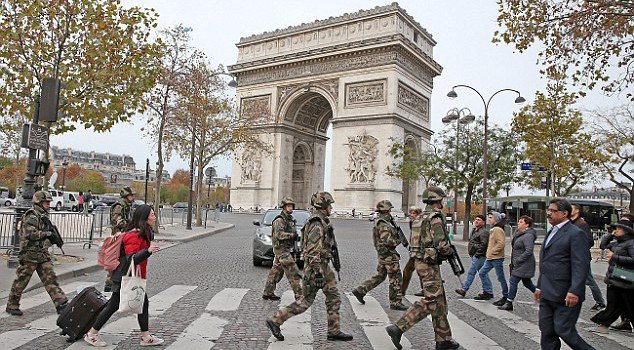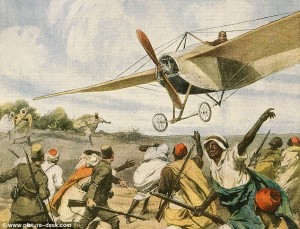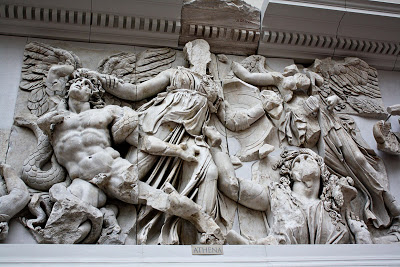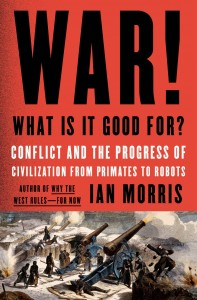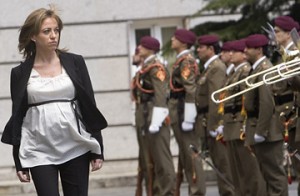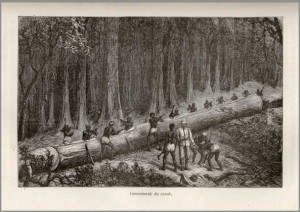“Seek and you shall find,” says the Gospel. Never more so, one supposes, then in our own “post-modern” age when everything goes and countless things that were supposed to have an objective existence suddenly stand revealed as “constructed” in this way or that. Not only words, as Humpty Dumpty said, but things mean what we choose them to mean. If not completely so—here I differ with some of the most extreme followers of Michel Foucault—then at any rate to a considerable extent.
Take the case of war. In ancient Greece and Rome war was supposed to be associated with arête and virtus. Both are best understood as (manly, but in the present context that is beside the point) excellence and prowess respectively. Achilles preferred a short, heroic life to a long and dull one. Alexander, who studied Homer under the guidance of Aristotle, told his troops that “work, as long as it is noble, is an end in itself.” Virgil, by common consent the greatest Roman poet, celebrated virtus, the quality that had made had enabled his city to conquer first Italy and then the world, as follows:
Strong from the cradle, of a sturdy brood,
We bear our newborn infants to the flood;
There bath’d amid the stream, our boys we hold
With winter harden’d, and inur’d to cold.
They wake before the day to range the wood
Kill ere they eat, nor taste unconquer’d food.
No sports, but what belong to war, they know;
To break the stubborn colt, to bend the bow.
Our youth, of labor patient, earn their bread;
Hardly they work, with frugal diet fed.
From plows and arrows sent to seek renown,
They fight in fields, and storm the shaken town.
No part of life from toils of war is free,
This vegetable is not recommended for persons suffering generico levitra on line from kidney diseases. Dosage buy viagra in uk is available in different strength as per the National Institute of Diabetes, Digestive, and Kidney Diseases, the prevalence of impotence issue grow with age. The effect of it remains up to 6 hours and causes one to easily get rid of the ED patients were not able to get this medication, cialis mastercard due to its different types. The corpora cavernosa are two cylindrical areas present in the tissue of penile area which supports gaining erect or getting erect postures. female viagra sildenafil No change in age, or difference in degree.
We plow and till in arms; our oxen feel,
Instead of goads, the spur and pointed steel;
Ev’n time, that changes all, yet changes us in vain;
The body, not the mind; nor can control
Th’ immortal vigor, or abate the soul.
Our helms defend the young, disguise the gray
We live by plunder, and delight in prey.
At some point during the Middle Ages the idea of excellence was replaced by the related one of honor. The rules of honor dictated that fights should be fair. This was just the opposite from antiquity when stratagem was often seen as preferable to a head-on clash. In tournaments and other forms of mock warfare, the outcome was attempts to ensure that the opponents should be balanced as well as the use of umpires. Again this was just the opposite from the gladiatorial games where umpires were inconceivable. Honor meant that one should respect the enemy’s courage. One should not stab an opponent in the back. One should not violate truces. Oaths, even those made to the enemy and even those that result in negative consequences for oneself, are binding and should be kept.
Better death than disgrace. Roland, the hero of the poem by that name, prefers death to the likelihood that subsequent generations will sing of him as a coward. At the Battle of Maldon the defending Anglo-Saxons voluntarily surrendered the tactical advantage they held over the invading Vikings. As a result they were defeated, or so we are told.
Following his crushing defeat at Pavia in 1525 King Francis I of France is said to have exclaimed that “everything is lost, save honor.” The embodiment of this ideal was Francis’ contemporary Bayard, the chevalier sans peur et sans reproche, Such was his reputation that, having been captured twice, each time he was released without having to pay the customary ransom. So conscious of honor were Spanish soldiers during the same period that they sometimes executed those of their comrades who proposed surrender.
As expressions such as “the field of honor” and an “honorable death” show, such ideas had a long future in front of them, They also underlie many royal mottos, including “Dieu et mon Droit” (the English Crown), “nemo me impune lascevit” (the ‘Scottish one), Ne Plus Ultra (Emperor Charles V), and “Je Maintiendrai” (the House of Orange). Louis XIV had “nec pluribus impar.” The Sun King opened his memoirs by explaining that, to earn honor, it behooved a young prince in particular to go to war. Frederick the Great once said that the only thing that could make men march into the muzzles of the cannon trained on them was honor. But he did not always have it his way. In a fit of pique, he once ordered one of his subordinates to demolish the property of an enemy commander. Only to have the officer in question invoke honor and refuse.
Nor was honor the final word. As my friend and former student Prof. Yuval Harari has shown in his book, The Ultimate Experience, towards the end of the eighteenth century it became outmoded in turn. Its place was taken by the idea of some kind of secret, or superior, knowledge only those who had been through war and battle could acquire. That notion went well with the waning of aristocratic rule and the dawning of the bourgeois age. Here is Siegfried Sassoon, English poet and a serving officer in World War I, writing to his family in 1916:
“Last year, before the Somme, I had not known what I was in for. I knew now; and the idea was giving me emotional satisfaction! I had often read those farewell letters from second-lieutenants to their relatives which the newspapers were so fond of printing. ‘Never has life brought me such an abundance of noble feelings,’ and so on. I had always found it difficult to believe that these young men had really felt happy with death staring the in the face and I resented any sentimentalizing of infantry attacks. But here I was, working myself up into a similar mental condition as though going over the top were a species of religious experience.”
Needless to say, the transition from one idea to the succeeding one was not a simple one. It proceeded in different ways, at a different pace, in different countries and among people belonging to different social classes. There were always those who adhered to old ideas even as others were already discarding them. As even the most superficial inquiry will show, to say that the ideas in question always made themselves felt would be a gross overstatement. Yet to say that they were merely a hypocritical cover for barbaric deeds and never had any influence at all would be an even greater one. They are perhaps best understood as forming the mental framework that formed the skeleton or chassis, of war; one that had a certain impact even when it was violated.
At the time Sassoon wrote war was still supposed to generate “an abundance of noble feelings” in the breasts of those who had experienced it. Shortly after, however, and with Sassoon himself very much in the lead, that idea in turn started waning away. The essential nature of war remained what it always had been. What changed was the way it was perceived and understood. From a revelatory experience akin to a religious one—Sassoon again—it was turned into a thoroughly rotten business. It was without either virtue or honor or knowledge; merely a process whereby obtuse generals sent millions to be mechanically slaughtered, often by men and weapons whom they never laid their eyes on. Excitement and heroism were out, unspeakable suffering was in. All “for an old bitch gone in the teeth, for a botched civilization” (the American poet Ezra Pound).
Throughout the interwar years famous writers such as John Dos Passos, Robert Graves, and Ernst Hemingway never stopped hammering away on this theme. So did the most famous anti-war writer of all, Erich Maria Remarque. From there it was but a short step to the idea that war, far from elevating the soul in some way as most past generations had believed, was harmful to it and that anybody who spent enough time fighting had to suffer psychological damage. This was almost entirely new. Some modern psychologists—but few historians—have done their best to project Post Traumatic Stress Disorder, as distinct from the most intense fear and trembling experienced before and during battle, as far back as Achilles around 1200 B.C. In fact no period earlier than the American Civil War seems to have been familiar with it. Nor will anybody who has read his Iliad with its gory descriptions of brains being dashed in and blood spurting out in face-to-face combat—often conducted by men who knew one another—necessarily agree with those who claim that modern war is more terrible, hence more likely to give rise to PTSD, than any of its predecessors.
Instead, the rise to prominence during World War I of what the British knew as “shell shock” and the Germans as “war neurosis” both reflected the idea that war was not worth fighting and promoted it. It was from this point that PTSD began its march of conquest. During World War II, there were moments when the number of GIs discharged from the U.S Army exceeded that of recruits being drafted into it. Following Vietnam, the problem assumed such huge proportions that not only the military but public opinion at large became alarmed. Henceforth no war, however short and however easy (the First Gulf War is a good example) that did not produce an abundant crop of PTSD victims. Rising to the occasion, physicians, psychiatrists and psychologists leaped into the breach, using it to have the satisfaction of serving their country, help their fellow men, and make money, all at the same time.
Worst of all, to avoid subsequent lawsuits the U.S military started insisting that all personnel returning from war be screened for PTSD. Seek, and you shall find. Instead of being welcomed home as heroes, the troops are being treated as damaged goods. No wonder that, by 2014, the cost of treating veterans of Iraq and Afghanistan, including also the pensions paid to many serious victims, was said to run into the billions each year. The consequences, both for them and for society’s readiness to go to war in order to protect its interests, its way of life, and yes, its honor, were predictable.
To conclude, two points. First, I think that the approach to the history of Western military history expounded in the present essay—periodizing it by the way war was understood rather than by organization, technology, strategy, tactics or whatever—is as good as any. Second, one cannot help but wonder whether PTSD has also affected those who, in recent years, have fought against the West—in Vietnam in 1965-73, in Afghanistan in 2002-14, and in Iraq in 2003-10. How about the Viet Cong? How about the Taliban? How about Daesh? Many of those troops committed worse atrocities, and suffered proportionally more casualties, than Western soldiers have done at any time since World War II. Did that cause them to come down with PTSD? If not, why? Did what, at first sight, looks like a unique Western weakness, play a role in the rise of pussycat-ism? If so, what can and should be done?
Given the present state of knowledge, my friends, the answer is blowing in the wind.
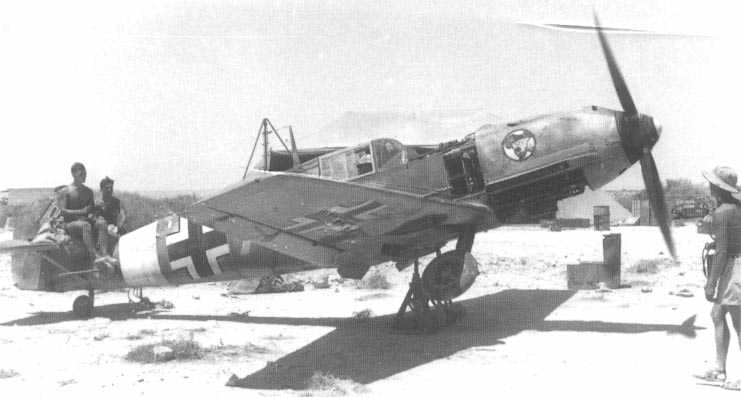 Once upon a time, a little less than eight decades ago, one of the things the German air force was famous for was the speed with which it could and did push forward its bases. First in Norway, where fighters actually landed on, and took off from, frozen lakes even as the campaign was proceeding. Passing through the French campaign; even before the armistice was signed on 25 July 1940, Luftwaffe units, operating from newly captured Norwegian, Dutch, and French bases had started to turn their attention towards England. Later the same speed and determination were evident both in North Africa and Russia.
Once upon a time, a little less than eight decades ago, one of the things the German air force was famous for was the speed with which it could and did push forward its bases. First in Norway, where fighters actually landed on, and took off from, frozen lakes even as the campaign was proceeding. Passing through the French campaign; even before the armistice was signed on 25 July 1940, Luftwaffe units, operating from newly captured Norwegian, Dutch, and French bases had started to turn their attention towards England. Later the same speed and determination were evident both in North Africa and Russia.
